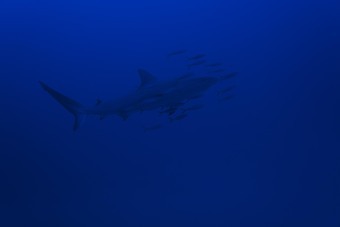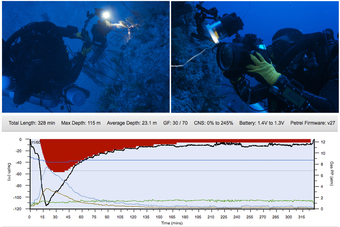Publications:
Gonzalez-Zapata et al. 2018
Mesophotic reef-building coral communities (~30–120 m depth) remain largely unexplored, despite representing roughly three-quarters of the overall depth range at which tropical coral reef ecosystems occur. Although many coral species are restricted to shallow depths, several species occur across large depth ranges, including lower mesophotic depths. Yet, it remains unclear how such species can persist under extreme low-light conditions and how the different symbiotic partners associated with these corals contribute to facilitate such broad depth ranges. We assessed holobiont genetic diversity of the Caribbean coral Agaricia undata over depth in three localities of Colombia: San Andres Island (between 37 and 85 m), Cartagena (between 17 and 45 m) and “Parque Nacional Natural Corales de Profundidad” (between 77 and 87 m). We used a population genomics approach (NextRAD) for the coral host, and amplicon sequencing for the associated Symbiodinium (non-coding region of the plastid psbA minicircle) and prokaryotic (V4 region of the 16S rRNA gene) symbiont community. For the coral host, genetic structuring was only observed across geographic regions, but not between depths. Bayesian clustering and discriminant analysis of principal components revealed genetic structuring between the three regions, but not between shallow (<30 m), upper (≥30 and ≤60 m) and lower mesophotic (>60 m) depths. This pattern was confirmed when evaluating pairwise differentiation (FST) between populations, with much higher values between regions (0.0467–0.1034) compared to between depths [within location; −0.0075–(−0.0007)]. Symbiotic partners, including seven types of zooxanthellae and 325 prokaryotic OTUs, did not exhibit partitioning across depths. All samples hosted Symbiodinium clade C3 and the type C3psbA_e was present in all depths. Alpha microbial diversity was not significantly different between zones (upper vs. lower), which community composition between coral colonies was similar in the two zones (ANOSIM, R = −0.079, P > 0.05). The coral microbiome was dominated by Uncultured Betaproteobacteria in the order EC94 (16%), Unknown-Bacteria (15%), family Cenarchaeaceae (12 %), Burkholderiaceae (10%), and Hahellaceae (10%). The constant coral-holobiont composition along the studied depth range suggests that identity of the symbionts is not responsible for the coral's broad depth range and adaptation to low light environments.
17- 87 m
Mesophotic “mentions”
26 x (total of 5651 words)
Classification
* Presents original data
* Focused on 'mesophotic' depth range
* Focused on 'mesophotic coral ecosystem'
Fields
Community structure
Connectivity
Molecular ecology
Focusgroups
Bacteria and Archaea
Scleractinia (Hard Corals)
Symbiodinium (zooxanthellae)
Locations
Colombia - Caribbean Sea





